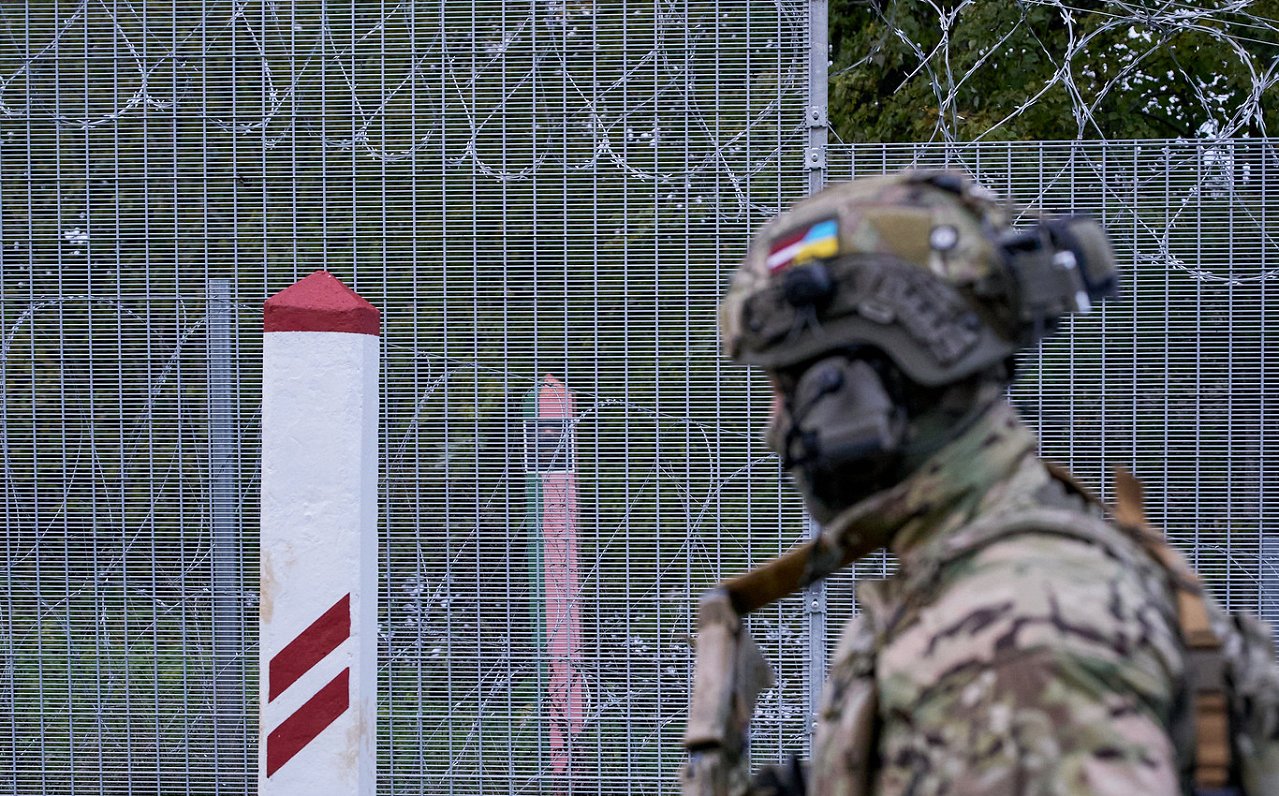The Eastern border military strengthening and anti-mobility plan is part of the creation of the Baltic Defense Line involving all three Baltic states, and will include the creation of support points for the National Armed Forces units along the entire Russian-Belarusian border including fortified defensive positions for soldiers, various obstacles and anti-tank ditches, plus ammunition depots.
From March of this year, the defense industry will continue practical work on strengthening the eastern border, investing 303 million euros in border strengthening over the next five years. Work will begin with digging up dozens of existing roads at the border to prevent their potential use during an incursion, plus the creation of anti-tank ditches. Drainage ditches on the border will also be transformed into anti-tank ditches.
Different types of obstacles will also be placed, including concrete blocks, so-called "dragon's teeth" and anti-tank minefields, according to the prevailing terrain, which includes areas of swamp and thick forest.
According to the plan, preparations will also be made for the cutting of roads, railways and bridges in a hurry if necessary to impede an enemy advance.
Defense Minister Andris Sprūds praised the adoption of the plan and said border strengthening works were starting immediately at several border crossing points to Russia and Belarus. He shared a video of large concrete blocks being moved into place, accompanied by a musical soundtrack.
Pildot manu pavēli, jau šodien nekavējoties uzsākti robežas stiprināšanas darbi.
— Andris Spruds (@AndrisSpruds) March 5, 2024
Šķēršļu izlikšanas darbi sākti robežpunktos Grebņevā un Terehovā pie Krievijas, kā arī Piedrujā un Pāterniekos pie Baltkrievijas robežas. Izliktie šķēršļi nodrošina robežpunktu stiprināšanu un… pic.twitter.com/dnnz2YE2NC
As previously reported by LSM, in January of this year, the defense ministers of Latvia, Lithuania and Estonia signed an agreement on the establishment of the Baltic Defense Line to strengthen the eastern border of the Baltic states and NATO. The Baltic defense line will be built in a coordinated manner, but each country will do it with its own budget funds.
The Baltic Defense Line will significantly strengthen the capabilities of the Baltic States to militarily protect their borders and delay Russia's ability to conduct rapid military operations. The construction of the line is in line with NATO's defense plans.
On March 6, Latvia's senior military officer, Lieutenant General Leonids Kalniņš, also shared footage of concrete blocks being moved into place at border posts (minus the soundtrack), describing it as not the start but the continuation of longstanding efforts to defend the country.
Šis nav sākums, bet gan turpinājums, ko jau gadu desmitiem mēs darām, lai mūsu Latvija būtu aizsargāta. Veicam robežas stiprināšanas darbus robežkontroles punktos pie Krievijas un Baltkrievijas robežas pic.twitter.com/z9nZeAV3ug
— Ģenerālleitnants Leonīds Kalniņš (@LeonidsKalnins) March 6, 2024





























